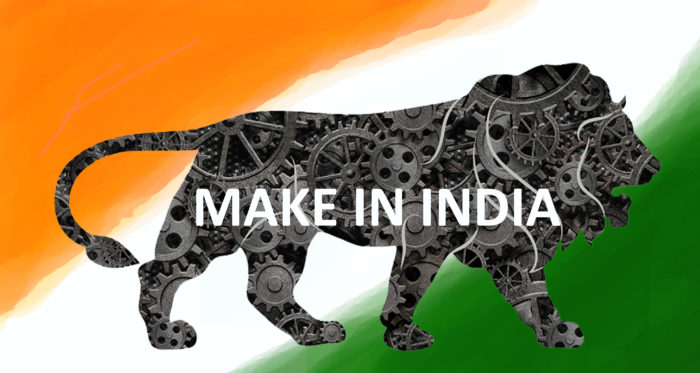
Kishor Kharat, MD & CEO, IDBI Bank, is convinced about the credit growth boost arising from the Make in India program, and has geared up his bank organizationally:
Mehul Dani: How will the ‘Make in India’ program benefit India’s financial sector?
 Kishor Kharat: Under the ‘Make in India’ program, focused approach has been adopted on creating jobs and skill enhancement in 25 sectors. It contains various proposals designed to urge companies – local and foreign – to invest in India. Coupled with various other initiatives taken by the government to improve the ease of doing business in the country, the program has led the next wave of investment and growth. Consequently, investment in new projects in manufacturing sector posting robust growth as is evidenced by increase in investment from `58,149 crore as on September 2014, rose to `104,347 (estimated) as on March 2016, marking a growth of 79.45% during the period in consideration. Even on an annualized basis, investment in new projects in manufacturing sector grew by 17.25% in March 2016 over March 2015
Kishor Kharat: Under the ‘Make in India’ program, focused approach has been adopted on creating jobs and skill enhancement in 25 sectors. It contains various proposals designed to urge companies – local and foreign – to invest in India. Coupled with various other initiatives taken by the government to improve the ease of doing business in the country, the program has led the next wave of investment and growth. Consequently, investment in new projects in manufacturing sector posting robust growth as is evidenced by increase in investment from `58,149 crore as on September 2014, rose to `104,347 (estimated) as on March 2016, marking a growth of 79.45% during the period in consideration. Even on an annualized basis, investment in new projects in manufacturing sector grew by 17.25% in March 2016 over March 2015
While some of the investments have been led by increasing FDI inflows in the country as was the intent under the program, there has been distinct, albeit modest, growth in bank credit as well. This is underscored by the rise in outstanding bank credit to `7,277,650 crore as on 18 March 2016 vis-a-vis `6,830,240 crore as on 2 October 2015, marking a growth of 6.55% during the period. As on 18 March 2016, the growth in bank credit on an annualized basis, i.e. over corresponding period of previous year, was 11.34%, which is significantly higher when compared to an annualized growth of 9.05% in bank credit as witnessed in end-March 2015.
For the year 2015-16, the overall credit growth is likely to be around 12% Credit growth has remained below the historical averages as meaningful growth in corporate credit is expected to come around with a lag due to various reasons including excess capacity which is yet unutilized or underutilized. Additionally, there is a lag between revival in credit demand and the actual pick-up in credit growth. This is because there is a time gap between conceptualization of a project and actual drawdown of the credit from the banks. For an infrastructure project loan, the gap may be of 3 years or even more.
However, the credit growth is expected to improve further in 2016-17 and thereafter, as the demand for credit picks up on the back of improving investor sentiments.
Which sectors are likely to generate direct and indirect loan demand?
IDBI Bank has a long legacy of industrial and infrastructure financing, including roads, highways, aviation, ports, shipping, construction, automobile, renewable energy, thermal power and chemicals. Additional exposure would be taken up within the sector-specific caps mandated by IDBI’s board. The bank is striving to create a more diversified asset portfolio. We will consider newer sectors such as tourism and hospitality, wellness, defence, media and entertainment, etc. The bank is also proactively working towards extending assistance to start-ups whose growth is expected to get further traction following the announcement of ‘Startup India’
How has the ‘Make in India’ program contributed to the increase in loans?
Yes, IDBI Bank’s advances in Q3 FY16 stood at `2.09 lakh crore. Among others, sectors such as infrastructure, mining and quarrying, chemicals and chemical products, construction, food processing, automobiles and textiles are among the top 20 industries to which the bank has exposure. Most of these industries have exhibited positive growth in Q3 FY16 vis- a-vis Q2 FY16, reflecting growing demand for credit in these segments.
How will IDBI Bank mitigate losses arising out of lending to such manufacturers?
As regard risk mitigation, we employ best international practices in the area of credit risk management through employing robust risk assessment model for large, medium and small industry proposals. We will remain selective in extending assistance to sectors where the exposure and concentration are high. For projects that are stressed on back of various macroeconomic as well as sector- specific factors, the bank undertakes to restructure those exposures provided techno-economic viability is established.







